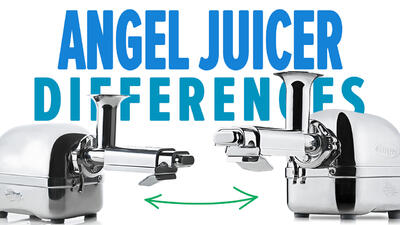The 5500 is the standard model of Angel juicer, and the one on which the others are based. All Angel juicers are very similar. They all feature the same motor, same auger design, same touch controls, and same stainless steel motor assembly. The performance and yield is identical for all three Angel models. The 5500 is made from SU304 food-grade stainless steel. This grade of stainless steel is corrosion resistant and will stay looking new as long as it is cleaned properly after each juicing. Like all Angel models, the 5500 uses two counter-rotating gears which break down fruits and vegetables to their smallest components, allowing for the highest yield of any home juicer.
You can learn more about the Angel 5500 here.






